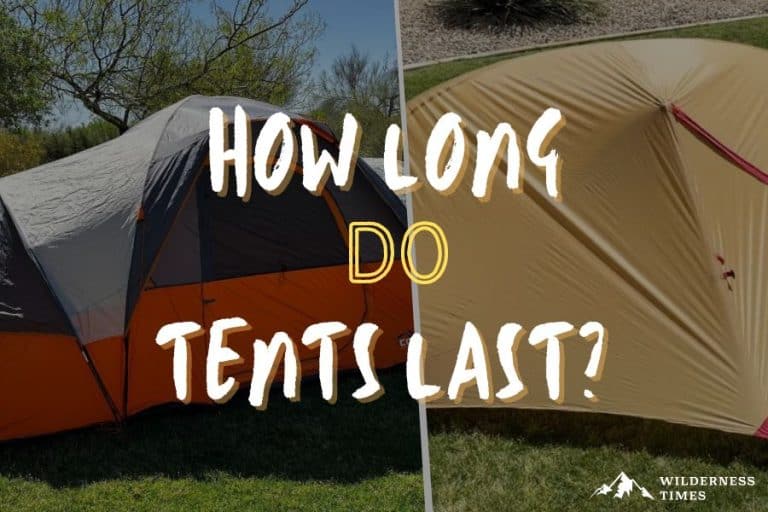If you’re anything like me, you love your tent!
Although we try to keep our tents around for as long as possible, all gear eventually has to retire.
In general, if you take good care of your tent, it can last you anywhere from 7 to 10 years – sometimes even longer!
In this article, we’ll discuss the lifetime of tents, and how you can keep your own tent healthy for a long life of camping trips.
Table of Contents
ToggleWhat Is The Lifespan Of A Tent?
How long your tent will last depends on a lot of factors, including its size, materials, and frequency of use.
In general, if you take good care of your tent, it can last you anywhere from 7 to 10 years – sometimes even longer!
What Is The Most Durable Tent Material?
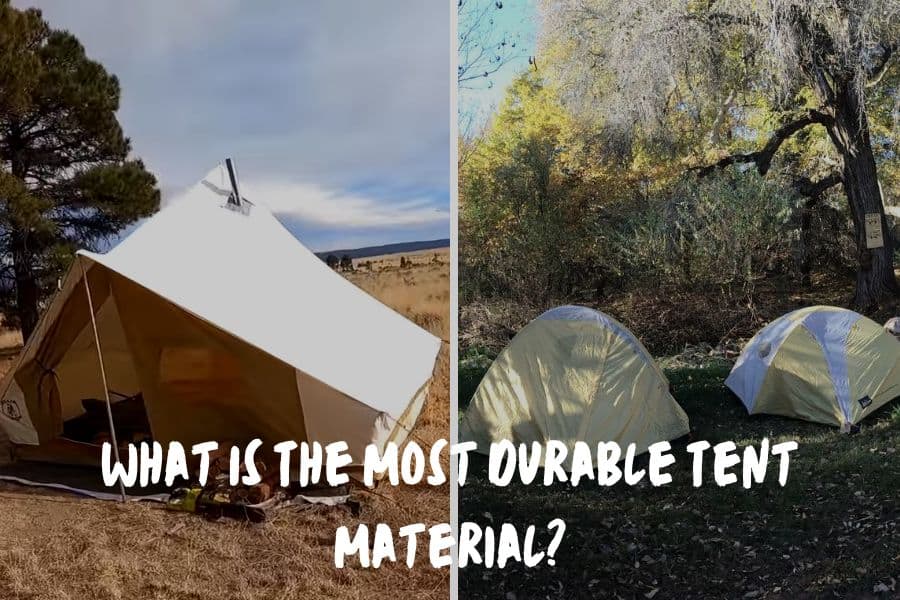
Tent materials generally come in two types: canvas or synthetic.
Canvas tents are by far the most durable tent material and can last for decades, but they can be exceedingly heavy and difficult to pack down.
Because of this, canvas is a great option for car camping, or scenarios where you will not need to carry your tent materials long distances.
Synthetic tents are usually made from nylon or polyester blends. They can be incredibly light and easy to compress and pack down.
However, the lighter fabrics are less durable and more likely to rip and tear on the trail.
So, if you’re looking for durability and don’t have far to go before setting up camp, a canvas tent will be a great option for you.
However, tents made from synthetic materials are by far the most common type of tent.
How To Lengthen (Or Shorten) Your Tent’s Lifespan
There are multiple factors that will determine your tent’s lifespan.
These include material, frequency of use, weather exposure, and maintenance.
In this section, we’ll talk about the reasons why your tent may last longer than others, and the best ways to make sure it does.
Materials

As we mentioned above, there are two main types of fabrics used in tents: canvas and synthetic.
Canvas/cotton tents are extremely durable but, because of the size and material, can be more cumbersome to use and pack in a backpack.
While canvas tents are great for car camping, they are heavy and harder to manage. Plus, they are definitely not going to be used for backpacking, therefore, they are used less frequently.
Synthetic tents are more common among most campers. They are far more portable and can be used for multiple purposes beyond car camping.
Most synthetic tents are also covered with treatments that increase the fabric’s resistance to water and UV damage.
All synthetic fabric coatings are going to increase the durability and lifespan of your tent by keeping water and UV damage low.
It’s normal for tents to lose these coatings over time.
But, lucky for you, there are multiple sprays and treatments on the market that can help you re-apply the coatings when needed.
Weather & Elements

Repeated exposure to harsh weather can damage your tent’s materials and equipment over time.
Tents are made to protect you from unfortunate weather and can sustain a good amount of wear from wind, rain, snow, and more while doing so.
In addition, too much exposure to UV rays, salt, or sand (hello, beach camping trips) can cause wear to your tent materials and poles.
This is especially true with aluminum poles, which can be damaged by salt from the ocean water and air.
The ideal camping conditions for a well-maintained tent are in a shady area on a moderate day.
However, we all know that we can’t plan the weather (and snowy campouts are fun!).
So, it’s important to be aware of the wear and tear the elements can inflict on tents, and keep an eye out for damage.
This way, you’ll know when you might need to replace your current tent with a new one.
Frequency Of Use
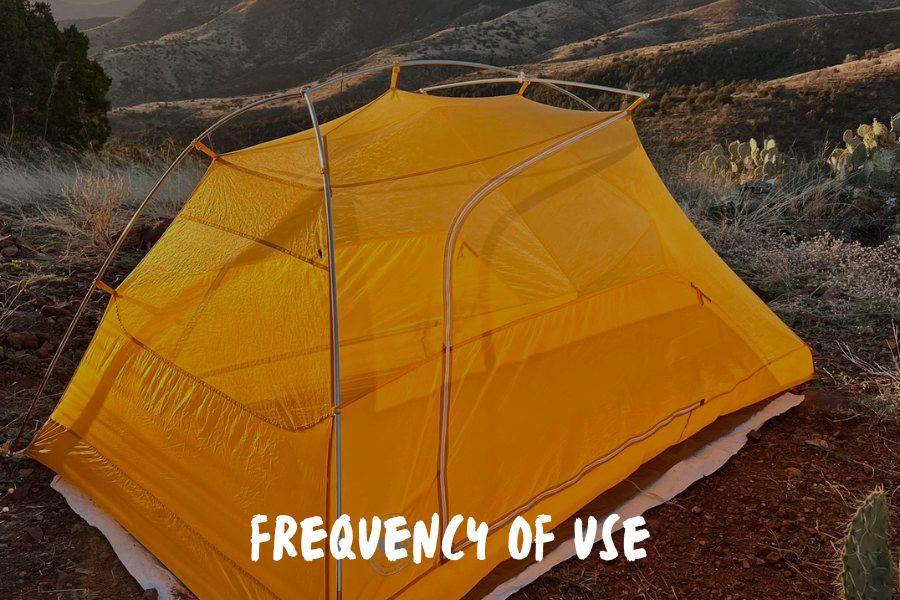
One of the most important factors in tent lifespan is how often you use your tent.
The general rule of thumb is the more you use your tent, the more wear and tear it’ll get.
The more wear and tear, the shorter the lifespan.
However, if you take care of your tent with proper maintenance techniques, it can last ten or more years!
Maintenance & Care
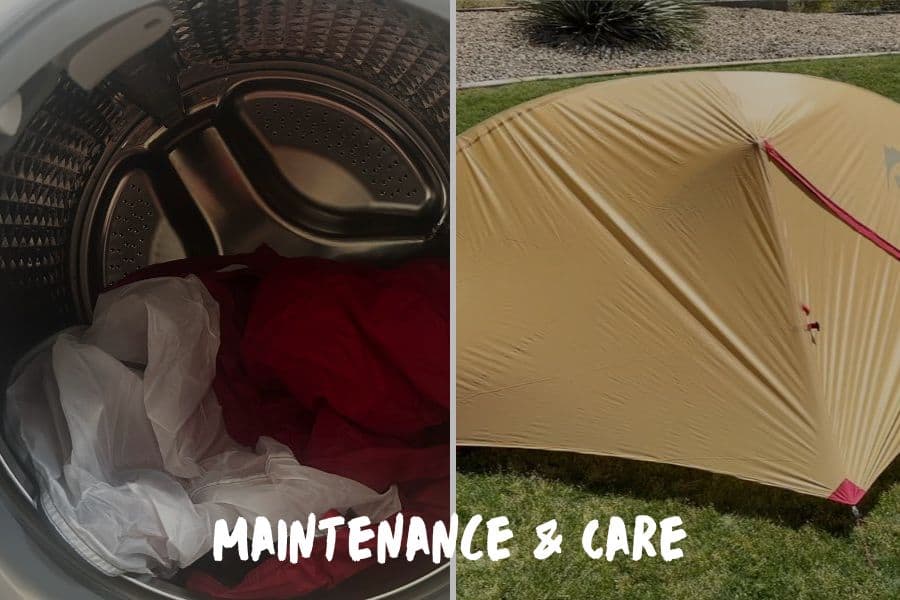
The easiest way to care for your tent is to keep it clean.
When you’re on the trail, make sure you keep your tent clean by taking off dirty gear before entering, like muddy shoes or sandy packs.
And, if you see any debris on the outside of the tent, wipe it off with a damp cloth.
When you’re back at home, hang your tent out to dry in a clean area and wait until it is completely dry.
Any remaining moisture can cause mold or mildew growth, so it’s important to let all parts completely dry before folding it up for storage.
And instead of tightly folding up your tent like you would on the trail, put your tent away while it is lightly folded.
This will help prevent unnecessary wear on the materials from being packed too tight and any mold or mildew.
If you were on a beach camping trip, also be sure to wipe off your aluminum poles with a damp cloth before putting away for storage.
This will remove any residual salt from the poles and prevent any medal erosion.
Also see: How To Clean A Tent: Mastering the Art of Washing Your Tent
How To Repair A Tent
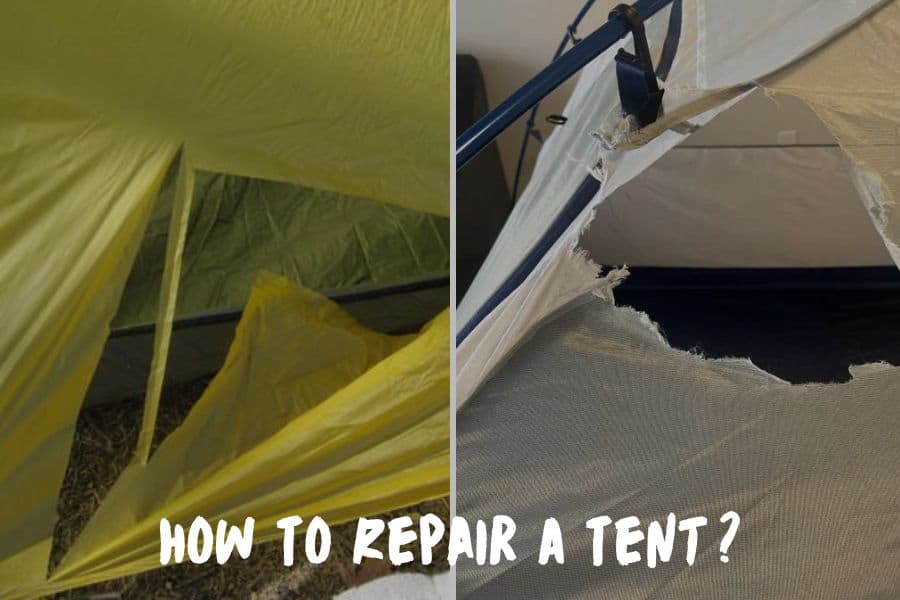
Repairing your tent when it gets damaged is a great way to lengthen its lifespan.
Smaller holes and tears are easy to fix and can be addressed on the trail with duct tape or climbing tape.
Depending on the size of the tear, this can be a great short- or long-term solution.
If it seems like the rip could need more extensive solutions, you can always pull out a sewing kit or tent glue when you get home to repair the damage.
Read:
When Should I Replace My Tent?
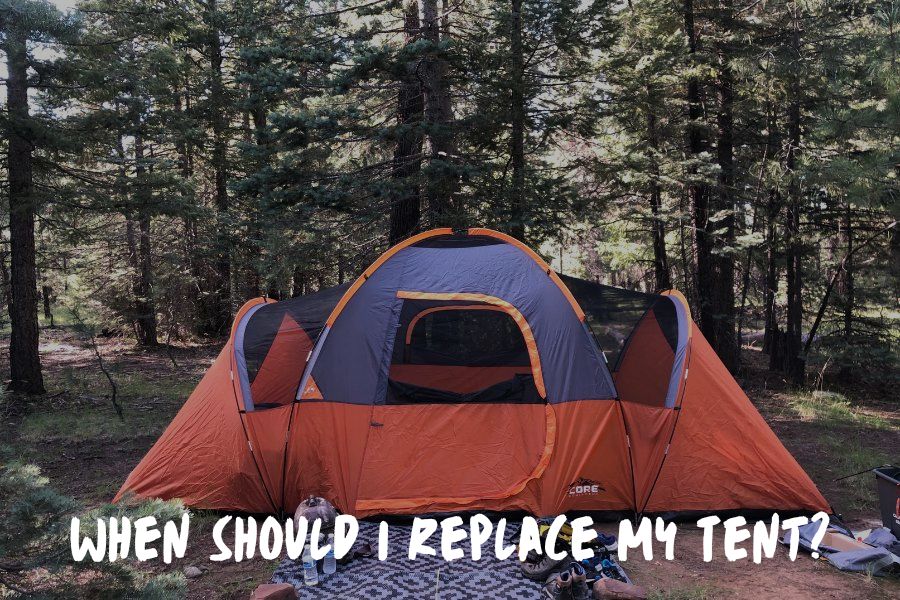
It’s important to know when your tent is past repair, or in need of a replacement.
Here are a few signs that indicate it’s time to replace your tent:
The first category is fairly obvious: broken poles, large rips, and unusable zippers.
If you see any of these issues present with your tent that you cannot fix, it’s time to look for a replacement.
Another important sign to look out for is fabric stretching. Tents work most effectively when the fabric is pulled taut between poles and guylines.
If the fabric on your tent is stretching to the point of sagging between its poles, the tent will not work as effectively, and it’s time for a new tent.
If you need a new tent, we recommend you start here to sort out the best type of tent for your particular needs.
FAQs
Are There Any Signs That Indicate It’s Time To Replace A Tent?
Look for the obvious and less obvious signs that it’s time to look for a replacement.
These can include: broken poles, large rips, unusable zippers, and fabric stretching.
Is There A Difference In The Lifespan Of Different Types Of Tents, Such As Backpacking Tents Vs. Family Tents?
There is definitely a difference in the lifespan of different types of tents.
In general, a backpacking tent is more likely to last longer than a family tent.
This is partially due to the materials used, as well as the frequency and type of use.
For instance, backpacking tents are generally made with better materials because they are made for sleeping on the trail.
In comparison, family tents are larger and use lower-quality materials.
They are meant to be set up for multiple days, like for cookouts or family camping trips.
Plus, makers know they will probably be “roughhoused” by younger campers.
Additionally, the larger family tents can be more difficult to clean and store properly.
Therefore, they lose their quality through maintenance-related wear and tear.
Can Repairs & Maintenance Extend The Lifespan Of A Tent?
Absolutely! As long as the damage isn’t catastrophic, most tents can bounce back and be (almost) as good as new with proper repair techniques.
Additionally, proper maintenance is important in taking care of your tent, and can keep your tent working as intended for years to come.
Are There Any Specific Care Instructions For Different Tent Materials?
You’re most likely to see specific care instructions for tents made with synthetic materials.
For the most part, these instructions will involve you applying your tent with sprays that add water or UV resistance.
Most synthetic tents come with these treatments applied. Maintenance will just involve you re-applying when needed.
It’s normal for your tent materials to lose their water and UV-resistant coatings with use, though.
So, don’t worry if you’re noticing your tent is less effective at keeping water at bay. A quick spray will solve all your worries!
Does Storing A Tent Properly Affect Its Lifespan?
Yes, storing a tent properly will affect its lifespan.
Make sure your tent is 100% dry before storing it in a dry, dark environment.
When storing, fold up your tent more loosely than you would when you’re on the trail.
This will prevent wear, as well as additional mold growth.
Can Using A Footprint Or Groundsheet Help Protect A Tent & Increase Its Longevity?
Yes, using a footprint or groundsheet can absolutely increase your tent’s longevity.
This is because the footprint will help protect the bottom of your tent from the wear and tear that can decrease its lifespan.
In Summary
So remember: when you take care of your tent, your tent will take care of you.
With proper maintenance and care, tents can last anywhere from 7 to 10 years – or with canvas, it can last for decades with proper maintenance and for many more campouts to come!
Next up: How to Patch a Tent: Quick and Easy Solutions for Rips and Tears


